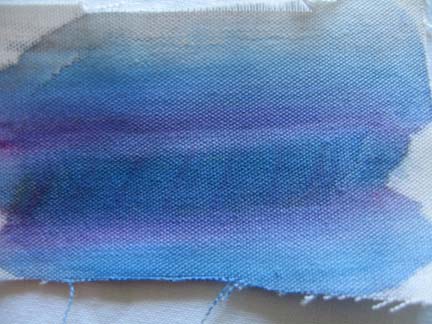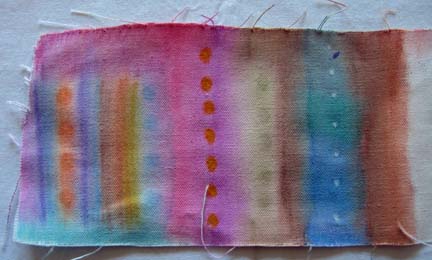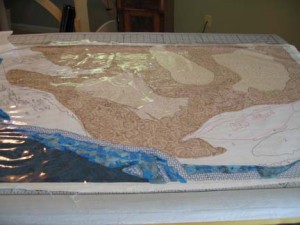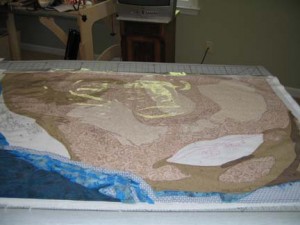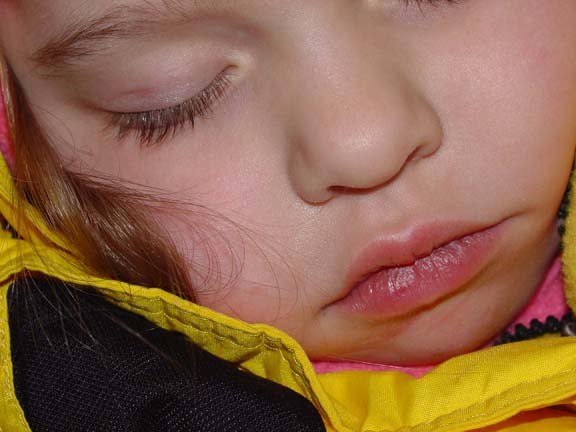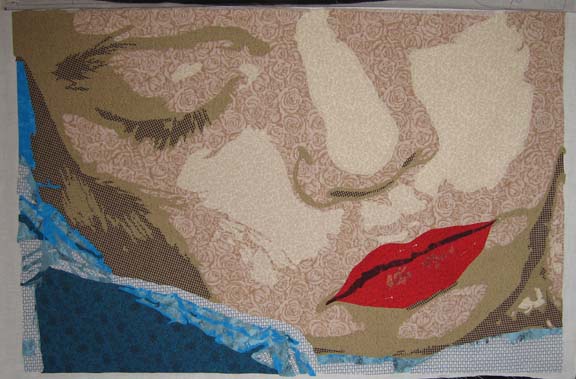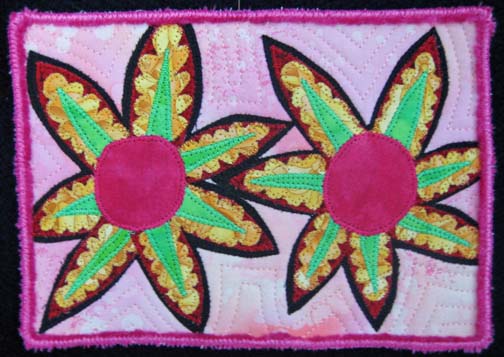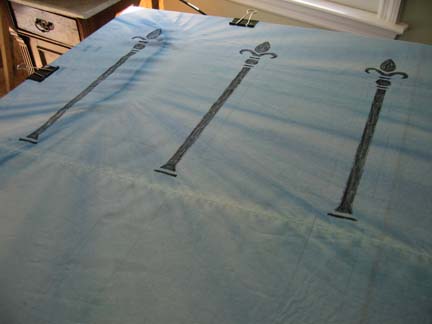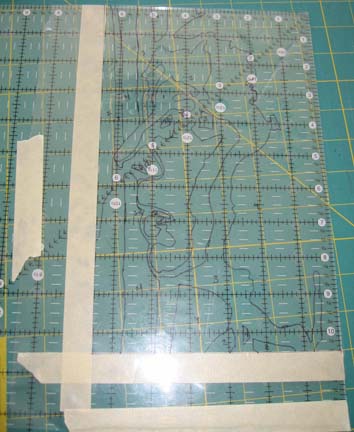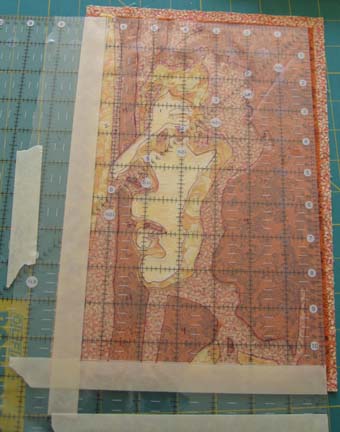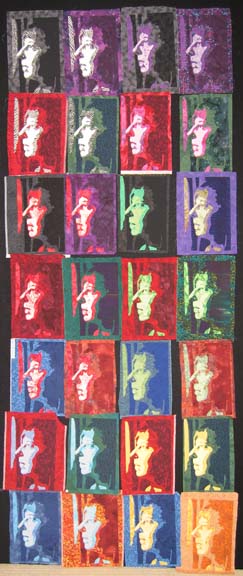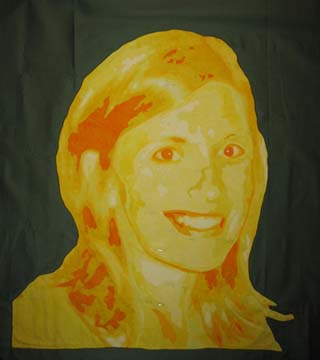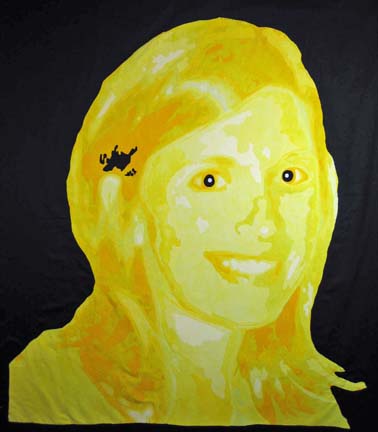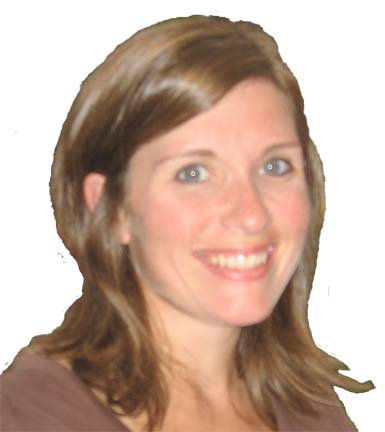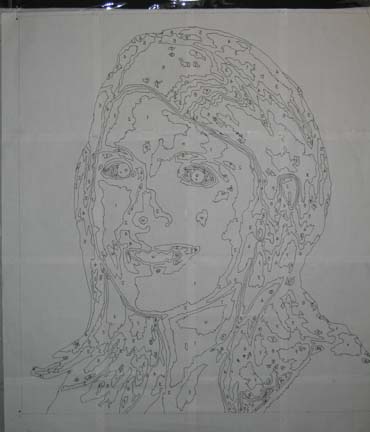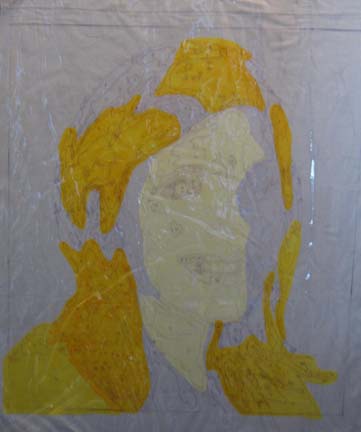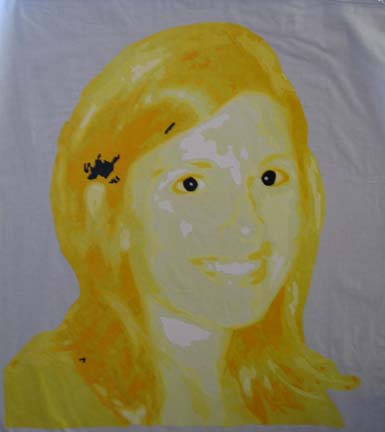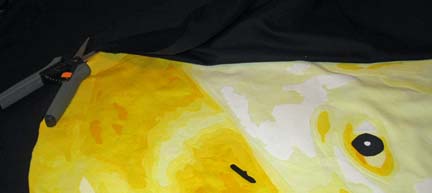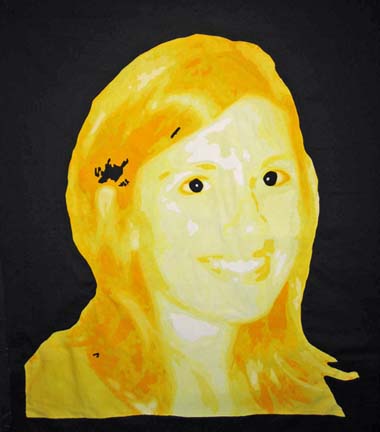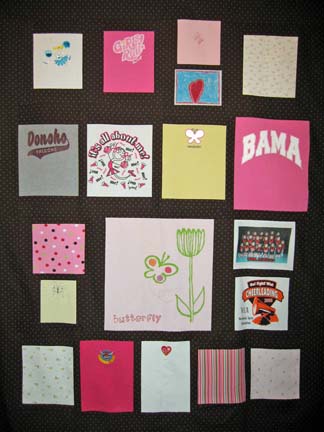I have had a major creative streak lately. I have several ideas in my head and am working happily away in my studio.
I went to visit a friend the day before yesterday — Heidi Miracle-McMahill. (You can find her work here.) I love the watercolor feel of her work. She let me play with her Caran D’Ache Neocolor II wax pastels. They are water soluble which means that they start to blend when you add water. I had brought over a set of Carb-Othello colored charcoal pencils that my mom had given me. They say that they are blendable but I didn’t find that to be the case. However, their color is very intense and work well in conjunction with the Caran D’Ache wax pastels.
I also really liked the fabric that she works with. She bought it from Fiber on a Whim. They called it Corona cotton canvas from Kaufman. It is a nice lightweight canvas — but heavier than Kona Cotton.
After we played, we went over to Dick Blick (which is just around the corner from both of us). I bought a small pack of the Caran D’Ache pastels and a nice paintbrush that I’ve been wanting. We looked at all of their canvas rolls, but they were unbleached and much heavier than what Heidi had.
When I came home, I had some cotton duck in the closet — so I thought that if I washed it, it would be close to the canvas cloth Heidi was using. It did soften, but when it was completely dry, it was stiff again. I have some Kona white in the closet. I think I’m going to experiment with that for a while. I don’t tend to paint my pieces — I am an applique kind of a gal — but surface design can be a lot of fun too.
I have not been keeping up on my blog with what I have in process. I have just laid out my latest piece. Here you can see the progress I made in the last few days:
I had a fabric epiphany last week. It hit me how to use commercial fabrics to make faces. I went into my closet & found exactly what I needed in my stash stuck in my white & brown drawers. I was so excited — and knew immediately that it would work.
Also, this is the first piece I’ve done in which I separate the face from the clothing — and from the lips. When I start in Photoshop & reduce the picture to B&W — then posterize it — I lose definition between objects that are different colors. I transferred the picture from Photoshop to CorelDraw to make my drawing — and then printed it out. I always smooth over the lines with a Sharpie marker on the final pattern. This time, I used colored Sharpies to define the jacket and the mouth. I had to go back to the original color picture to see where the lines should be drawn.
And here it is. I thought at first that the mouth was too red, but I’ve looked at it in Photoshop and a lighter color red doesn’t work. You may not see it in the picture, but there are supposed to be highlights on the bottom lip. I may change that.
Hmmmmm. I’m not sure about the lips. I’ll have to think about it.
I should also mention that in my last two pieces, this one and Unconditional, I was very careful with selecting fabrics. I am usually so eager to start. I love cutting up all of the pieces — I think it is my favorite part. But I have learned that making sure now will make the project so much smoother. (I have to save spontaneity for my non-applique pieces.) On pieces that I made last year, I just used my judgment, but the truth of the matter is that it is hard for my eye to always distinguish good value changes. Batiks especially can come out lighter in value than is expected. So I have been photographing my choice of fabrics and putting them on my computer. In Photoshop, I can take out the color, and when the picture is in B&W, I can easily see what works well and what doesn’t.
Back to the studio.
